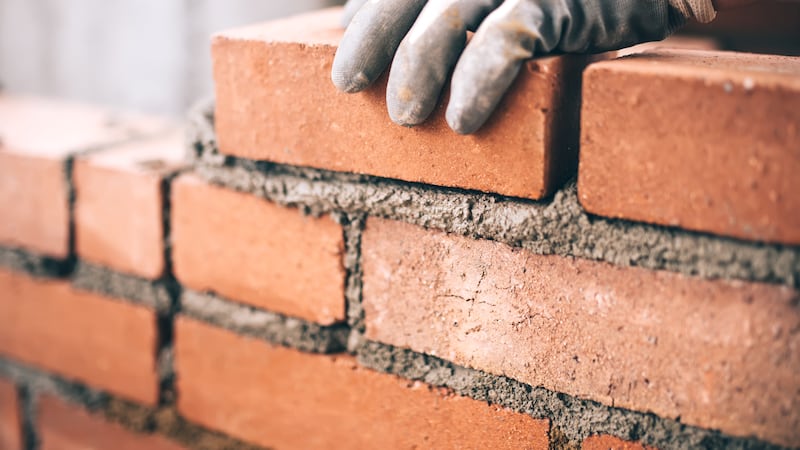Connemara's Rosmuc and east Galway's Athenry are focal points for the 1916 centenary's programme in the west on Easter Monday.
Athenry is one of four national points - including Dublin, Ashbourne, Co Meath, and Enniscorthy, Co Wexford - where a synchronised wreath-laying will take place at 1.15 pm -marking the time when the first shots in the Rising were fired.
The joint State/Galway County Council/GAA programme from 11am in Athenry town park will include a reading of the Proclamation, a minute's silence, and raising of the national flag. It will be preceded by a parade of Co Galway GAA clubs and a presentation of the county's culture, entitled Aeraíocht.
The schedule includes a parade back to Kenny GAA Park, where a commemorative plaque will be unveiled, lectures on the west’s participation by Dr Martin McCarthy and Dr Conor McNamara at the Athenry town hall from 3.30pm, a short film, exhibitions at Athenry castle, its town hall and heritage centre, and a music concert from 7pm at Raheen Woods hotel.
President Michael D Higgins recorded a special address for Raidio na Gaeltachta's current affairs programme Adhmhaidin, which is commemorating the Easter Rising and celebrating 30 years on air with a live programme from Patrick Pearse's Cottage in Ros Muc.
Historians Prof Gearóid Ó Tuathaigh of NUIG and Cormac Ó Comhraí , author of Sa Bhearna Bhaoil: Gaillimh 1913-1923, recently published by Cló Iar-Chonnachta, will give an historical context, and the programme will include poetry and prose by Pearse, performed by young people from the locality.
Among the contributors are journalist Seosamh Ó Cuaig, related to Colm Ó Gaora, leader of the Irish Volunteers in Connemara, and Fearghas Mac Lochlainn, great grand-nephew of Pearse.
Controversial
The main focus of the weekend commemorations in Galway city was on the controversial figure of Liam Mellows.
Once nicknamed "maneen", the diminutive Wexford man led a series of poorly armed forays by up to 800 men and women in east Galway, attacking Royal Irish Constabulary barracks in Oranmore and Clarenbridge, and taking over the town of Athenry.
Mellows opposed the Anglo-Irish Treaty, and was executed by Free State forces in December 1922. As History Ireland has put it, his death presents "fundamentally awkward questions ..for both the constitutional and revolutionary political traditions".
This "awkwardness" continues with separate commemorations held at his statue in Eyre Square every year. This past weekend, three ceremonies hosted by Sinn Féin, Republican Sinn Féin (RSF) and Fianna Fáil were timed to ensure that they did not coincide.
The smallest was hosted by Republican Sinn Féin on Sunday morning, when Tomás Ó Curraoin, the only RSF councillor in the State, recalled how the Easter Rising had “inspired the world”. However, the “freedom fighters” of 1916 had not striven and died for a “divided, two-state Ireland”, he said.
The subsequent execution of Mellows was among the first of 77 such by the Free State government,as part of a policy to instill “fear in the people”, he said.
Supporters
Cllr Ó Curraoin paid tribute to the “great Presbyterian” supporters of freedom from 1798, and said that a British strategy of “divide and conquer” continued to the “present day”.
“The child that is not born yet will stand up in arms against them, as it is the only thing the British ever knew,”he told about 30 people, proclaiming that “there will always be an IRA”.
An hour later, several hundred people attended the event hosted by the Castlegar cumann of Fianna Fáíl, and addressed by former TD Frank Fahy, who welcomed former colleagues including Independent TD Noel Grealish.
After a parade from Mass in St Patricks Church, five descendants of Easter Rising participants -Nicole Furey-Kane, Danielle Furey, Lisa Henry, Cathal Ryan and Daniel Broderick - read sections of the 1916 Proclamation.
Historian William Henry noted that Galway "never surrendered" but disbanded. Many supporters only had pikes for protection against "the most sophisticated army in the world", he said.
Cousins Kieran and John Furey bore a bullet-holed Oranmore-Maree Sinn Féin banner, which had been designed by an Oranmore nun,Sr Conception Fagan.
After it was confiscated, the spirited Sr Fagan had successfully “demanded it back”,the cousins said.















